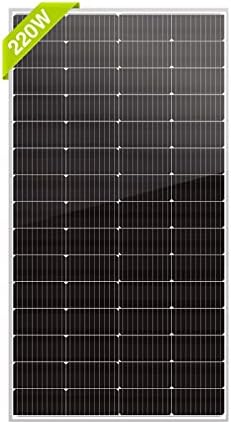Living off the grid has been an incredible journey for me, and one of the key components of my sustainable lifestyle has been the use of solar panels. Over the years, I’ve tried various types of solar panels, and I must say that amorphous silicon solar panels have been a game changer. However, like with any technology, there are pros and cons to consider when deciding which type of solar panel is best for your off-grid lifestyle. In this article, I will provide a comparative analysis of the pros and cons of amorphous silicon solar panels, based on my own experience and research.
Pros of Amorphous Silicon Solar Panels
1. Flexibility: One of the biggest advantages of amorphous silicon solar panels is their flexibility. Unlike traditional crystalline silicon solar panels, amorphous silicon panels are thin and lightweight, making them ideal for use in off-grid settings where space and weight are at a premium.
2. Low Light Performance: Another pro of amorphous silicon solar panels is their ability to perform well in low light conditions. This means that even on cloudy or overcast days, these panels can still generate a significant amount of power, which is a huge advantage for off-grid living.
3. Durability: Amorphous silicon solar panels are also known for their durability. They are less prone to cracking or damage from impact, making them a great choice for off-grid setups in remote or rugged locations.
4. Better Performance in Hot Weather: Compared to crystalline silicon solar panels, amorphous silicon panels tend to perform better in hot weather. This means that they can maintain a higher level of efficiency when the sun is beating down, which is particularly beneficial in regions with high temperatures.
5. Cost-Effective: While initially, amorphous silicon solar panels may have a higher cost per watt compared to crystalline panels, they often have a better overall cost-effectiveness due to their low light performance and durability.
Cons of Amorphous Silicon Solar Panels
1. Lower Efficiency: Despite their versatility, amorphous silicon solar panels do have lower efficiency compared to crystalline silicon panels. This means that you may need a larger surface area of amorphous panels to generate the same amount of power, which can be a drawback for those with limited space.
2. Degradation Over Time: Another con of amorphous silicon solar panels is their tendency to degrade more rapidly over time, compared to crystalline panels. While the degradation rate has improved in recent years, it’s still something to consider when making a long-term investment in solar panels.
3. Size and Weight: While the flexibility of amorphous silicon panels is a pro, it can also be a con in certain situations. Because they are often larger and bulkier than crystalline panels, they may not be the best choice for some off-grid setups with limited space or weight restrictions.
4. Installation Considerations: Amorphous silicon panels require a different type of installation compared to crystalline panels, which may not be suitable for all off-grid locations. Additionally, their lower efficiency means that more panels may be required to achieve the desired power output, which can add to the complexity of the installation process.
5. Limited Availability: While the popularity of amorphous silicon solar panels is growing, they are still not as widely available as crystalline panels, which can make them more difficult to source in some areas.
Pro Tips for Using Amorphous Silicon Solar Panels
1. Proper Placement: To maximize the performance of amorphous silicon solar panels, ensure that they are placed in an area with maximum exposure to sunlight, especially in locations with less consistent sunlight.
2. Regular Maintenance: Due to their lower efficiency and degradation over time, it’s important to perform regular maintenance on amorphous silicon solar panels to ensure they continue to operate at their best.
3. Consider Hybrid Systems: In some cases, combining amorphous silicon panels with other types of solar panels, such as crystalline or thin-film, can offer the best of both worlds in terms of efficiency and flexibility.
4. Storage Solutions: Given the lower efficiency of amorphous silicon panels, it may be wise to invest in a reliable energy storage solution, such as battery banks, to ensure a consistent power supply, especially during periods of low light.
Conclusion
In conclusion, amorphous silicon solar panels offer several advantages for off-grid living, such as flexibility, low light performance, and durability. However, they also come with their fair share of drawbacks, including lower efficiency and degradation over time. When considering whether to use amorphous silicon solar panels for your off-grid lifestyle, it’s essential to weigh these pros and cons and consider your specific needs and circumstances. Ultimately, the decision will depend on factors such as available space, budget, and the level of sunlight in your location. With the right approach and preparation, amorphous silicon solar panels can be an excellent choice for powering an off-grid lifestyle in a sustainable and reliable manner.


